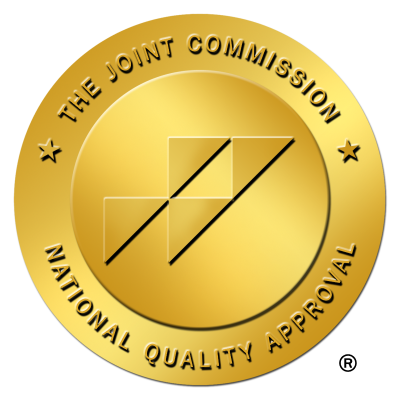Your Full Guide To Addiction Treatment Options

Key Takeaways
- Assessment is crucial: Begin with honest self-evaluation of withdrawal risks, medical stability, and daily life pressures to match the right level of care to your unique needs
- Evidence-based care works: Prioritize programs offering proven therapies like cognitive-behavioral therapy and medication-assisted treatment, backed by accreditation from The Joint Commission or CARF
- Support systems matter: Family involvement and peer support significantly increase treatment completion rates and long-term recovery success
- Financial planning is essential: Understand your insurance coverage, explore sliding-scale options, and factor in all costs including transportation and time away from work
- Recovery is a journey: Expect setbacks as part of the process, maintain flexible treatment plans, and focus on building sustainable daily habits for lifelong wellness
Understanding Today's Addiction Treatment Landscape
Facing addiction treatment options today can feel daunting, and if you're feeling lost or anxious about what to do next, you're absolutely not alone. The continuum of care model now underpins modern substance use treatment, personalizing support at every stage and ensuring no two journeys are ever treated the same.1
By understanding levels like early intervention, inpatient rehab, and ongoing peer support, you gain clarity—building a treatment plan tailored to your specific needs. We'll walk through key readiness questions and show you practical ways to match the right resources to your real-life goals (such as counseling, sober living, and dual diagnosis support).
The Continuum of Care: From Early Support to Intensive Programs
Addiction treatment options exist along a proven continuum of care, designed so you never need to walk this path alone. Early intervention provides proactive guidance and brief therapy when you first notice concerns, giving you a gentle entry point
If you or someone you love requires comprehensive stabilization, inpatient rehab offers 24/7 medical care and structure.1 In between, partial hospitalization and intensive outpatient programs become practical bridges—allowing you to heal while continuing with daily routines. These recovery programs are intentionally flexible, evolving with you as your confidence grows.
How Levels of Care Adapt to Your Unique Needs
Addiction treatment options must flex as your needs evolve—no single path suits everyone. Your care team uses ASAM criteria, looking at factors like withdrawal risks, co-occurring medical issues, and readiness for change to match you with the right level of support.1
When new challenges or progress appear, treatment intensity shifts—always with your safety and long-term goals at the center. Regular reassessment ensures you get just enough structure without feeling overwhelmed or under-supported, honoring both your strengths and the realities you face.
The Role of Evidence-Based and Holistic Therapies
Successful addiction treatment options blend trusted, research-backed methods with holistic support that honors the whole person. Evidence-based therapies—like cognitive behavioral therapy and medication-assisted treatment—form the backbone of effective recovery, with strong research showing they boost long-term success rates.2
Programs that add holistic elements—mindfulness, art therapy, wellness groups—help you rebuild self-worth, manage stress, and develop practical coping skills. This approach works best when you value emotional healing alongside clinical excellence. Recovery works best when it fits your needs, your values, and your personal style.
Why Family & Peer Support Matter in Long-Term Recovery
Building reliable family and peer support into your recovery isn't just helpful—it's essential. Genuine encouragement from loved ones and peers creates accountability and resilience, especially during tough stretches.
Research confirms that individuals with strong family involvement are significantly more likely to finish treatment and avoid relapse.3
Peer networks—like sober communities or mutual support groups—offer empathy grounded in real experience, helping you navigate stress and setbacks. If you're serious about sustained sobriety, prioritize addiction treatment options and recovery settings that actively foster supportive relationships and family education.
What is Substance Use Disorder (SUD)?
Self-Assessment: Navigating Your Readiness for Change
Acknowledging where you are on your healing journey is brave—and genuinely, you're in good company if this moment feels uncertain. Self-assessment is not about judgment or perfection; it's a vital step to determine which addiction treatment options and recovery strategies best fit your unique reality.
Factors such as your awareness of the impacts of substance use, motivation for change, and your self-confidence in facing recovery challenges all play a crucial role.1 This practical clarity helps guide tailored interventions, supports steady progress, and ensures your care team matches help to your current capacity and needs.
Key Questions to Evaluate Severity and Needs
Taking a clear, honest look at how substance use is shaping your daily life arms you with crucial information for choosing addiction treatment options that truly match your needs. Consider these essential questions:
- Is substance use disrupting your routines, goals, or relationships?
- Have you noticed withdrawal symptoms, growing tolerance, or repeated struggles to cut back independently?
- Do you have chronic illness or complicated medication regimens that may require medical detox?
- Are you surrounded by triggers or instability in your living situation?
If you're facing dangerous withdrawal, have attempted self-harm, or lack safe housing, structured environments or residential care may offer the best foundation for lasting recovery solutions.1
Exploring Mental Health and Dual Diagnosis Factors
If you're noticing symptoms like low mood, anxiety, sleep problems, or lingering effects of trauma alongside substance use struggles, you are not alone—and your experience is absolutely valid. Addiction treatment options must address both mental health needs and substance use together when they co-occur, a clinical reality known as dual diagnosis.2
Only by integrating approaches—combining therapy, medication, and peer support—can you achieve authentic, lasting recovery. If you've previously been treated for depression, PTSD, or take psychiatric medications, bring these details to your care team so they can build a treatment plan that respects your full story and truly supports your healing.
Assessing Support Systems and Treatment Barriers
Yes, weighing your support network and identifying real-world barriers is challenging, but believe me, it's one of the most important steps in selecting addiction treatment options that actually work. Look honestly at your relationships—are there family or friends you trust, or workplace supports that can flex around therapy schedules?3
Watch for practical barriers: do you have steady transportation, affordable childcare, or reliable access to quality rehabilitation services? Financial restrictions, limited insurance, and rigid work obligations can heavily influence treatment choices. This assessment helps you avoid dead ends, opening up recovery pathways that actually fit your real-life circumstances and sustain your progress.
Ethical and Practical Considerations in Choosing Care
Choosing among addiction treatment options can feel overwhelming, especially when ethical and practical factors come into play. It's perfectly normal to wrestle with worries about privacy, affordability, and fair access.
Quality recovery services must balance gold-standard, evidence-based methods with genuine respect for your dignity, culture, and values.1 Your personal needs and rights matter just as much as clinical effectiveness—never let anyone make you feel otherwise.
Overcoming Stigma and Ensuring Confidentiality
Facing addiction treatment options often means confronting public misunderstanding and deeply personal fears about your privacy. No one should ever feel shame for seeking help. Stigma is a real barrier, but you can protect yourself by choosing recovery programs built on absolute confidentiality and respect for your story.
Trusted providers should follow HIPAA and even stricter substance use privacy rules, limiting access to your personal details at every step—your recovery remains your business unless you decide otherwise.1 When you know your information is protected, it becomes so much easier to focus on healing and building supportive relationships.
Understanding Insurance, Coverage, and Access Challenges
Deciphering your health insurance for addiction treatment options isn't easy—if you feel confused or frustrated, you're in good company. While most plans must now cover substance use disorder care just like other medical needs,4 real obstacles remain.
Prior authorizations, narrow provider networks, and unpredictable copays often delay or limit access to care, sometimes just as you're ready for help. Always verify the details: deductible levels, therapy limits, and facility types that qualify. This careful review helps you plan your recovery journey, keeping your financial reality in focus and making sure no unexpected bills block your progress.
Navigating Technology, Telehealth, and Digital Equity
Technology has dramatically expanded access to addiction treatment options—telehealth now offers a lifeline for many who can't attend in-person therapy, with research showing virtual sessions are just as effective for medication-assisted care and ongoing counseling.5
Still, digital recovery is not universally available: reliable internet, a private device, and basic tech skills are essential, and many in rural or low-income communities still struggle to connect. If tech barriers get in your way, ask about device lending, hands-on tech support, or programs that blend online and on-site therapy. Everyone deserves equitable access to care—your circumstances should never dictate your chance to heal.
SUD Treatment: An Overview of
Decision Framework: Matching Treatment to Your Life
Building your recovery plan starts here—by turning insight into real-world action. A strong decision framework empowers you to compare addiction treatment options wisely and systematically. You'll weigh factors such as therapy types, staff expertise, insurance details, and location against your true priorities, whether that's fast stabilization, flexible schedules, or ongoing family involvement.1
This honest evaluation balances immediate health needs with goals like keeping your job or repairing relationships. By defining your top decision points and assessing programs accordingly, you build confidence and clarity about which recovery path will serve your unique journey best.
Establishing Clear Criteria: What Matters Most?
Before you invest in any addiction treatment options, create a clear, actionable checklist that cuts through overwhelm. I always advise clients to list—on paper—what's essential:
- Facility accreditation and licensing
- Level of evidence-based care offered
- Staff specialties and certifications
- Outcome transparency and success rates
- Fit with your schedule or family needs
Give each factor a personal weight based on your goals for recovery support services and your life context. This structured scoring system lets you compare programs side by side, reducing emotion-driven choices. Recovery isn't one-size-fits-all; demand flexibility so your care adapts as your needs shift.1
Choosing among addiction treatment options can feel overwhelming, but understanding program structure is key. Inpatient rehab means fully immersing yourself in a safe, supportive environment—medical staff are available around the clock, which makes this pathway crucial for those with severe withdrawal risks or co-occurring medical conditions.1
Weighing Levels of Structure, Flexibility, and Evidence
Finding your best-fit addiction treatment options means honestly examining your need for structure versus flexibility and demanding real evidence every step of the way. Highly structured programs guide you with daily routines—ideal if early recovery feels chaotic.
Flexible treatment models, such as outpatient or hybrid formats, honor your work and family commitments while still delivering vital support. Research proves that approaches like cognitive-behavioral therapy and medication-assisted treatment form the backbone of lasting recovery.2
Ask yourself: Do you progress best with a scheduled environment, or do you need autonomy to juggle life's curveballs? Recognizing that preference helps you engage fully and persist through challenges.
Prioritizing Accreditation, Staff Expertise, and Outcomes
Deciding on addiction treatment options should always start with quality markers you can verify. Accreditation matters—programs with credentials from The Joint Commission or CARF meet strict standards for safety, ethics, and clinical care.1
Check that licensed professionals hold specialized substance use certifications and receive ongoing training. Ask for real outcome data: look for transparent reporting of client success rates, not vague claims. Quality programs in substance use care share measurable results, staff expertise, and uphold stringent ethical guidelines—nothing less will do when your health is on the line.
Tailoring Solutions for Distinct Life Circumstances
No two paths to recovery look the same—and your circumstances absolutely deserve a plan built for you. When identifying addiction treatment options, factor in your daily challenges and opportunities, whether that means crisis stabilization, work-life demands, or rebuilding family trust.
Evaluate how residential, outpatient, or family-focused services flex to your needs.1 Choose solutions that genuinely fit your lifestyle, values, and recovery priorities—because sustainable change grows from support that fits, not forces. You're not just managing symptoms—you're building a future on your terms.
For Individuals in Crisis & High-Risk Needs
If you're in the thick of a crisis—grappling with acute withdrawal, serious medical complications, or risk of harm—your safety becomes the single priority. In these moments, addiction treatment options like medically supervised detox and inpatient rehab with 24/7 nursing are not just helpful; they are life-saving.1
This approach works best when you're facing dangerous withdrawal, have attempted self-harm, or lack safe housing. These environments deliver urgent stabilization, psychiatric care, and evidence-based support, ensuring you receive immediate protection and a solid bridge to longer-term recovery solutions.
For Working Professionals Balancing Responsibilities
Protecting your career while seeking support doesn't have to mean putting your life on hold—many addiction treatment options are now specifically tailored for working professionals. Evidence-based outpatient and intensive outpatient programs offer evening and weekend sessions, flexible scheduling, and privacy safeguards, letting you maintain your job and family life while prioritizing recovery.5
Consider this method if you need a confidential, adaptable approach that addresses stress management, professional pressures, and substance use. Partial hospitalization programs offer structured daytime care—often ending by early afternoon—so you can return to work or personal responsibilities.
For Families and Decision Makers Seeking Lasting Results
If you're making choices for a loved one's recovery, you want addiction treatment options that truly restore your family—not just check a box. The strongest programs weave in family therapy, education sessions, and clear progress tracking, because healing from substance use disorder involves the whole household, not just the individual.3
Opt for this framework when you want centers that offer multigenerational support, practical skills for communication, and set boundaries to prevent old patterns from derailing recovery. Every healthy conversation and rebuilt trust is a measurable win on the journey forward.
Using Weighed Criteria to Guide Your Next Steps
Taking all you've learned about addiction treatment options and making confident choices requires a structure that genuinely works in the real world. Assign weights to your must-haves—like evidence-based treatment, staff credentials, or scheduling flexibility—then score each program, ideally with input from both your support team and care professionals.1
This approach strips out second-guessing and emotion, letting you see clearly which options align best with your life needs, goals, and support network. Consistent scoring creates clarity and preserves your energy for the hard work of healing ahead.
Setting Priorities for Immediate Versus Ongoing Care
Sorting out what you need for immediate stabilization versus what supports long-term growth is one of the most impactful decisions when exploring addiction treatment options. Early care should prioritize urgent needs—think safety, medical oversight, and emotional grounding through structured support.1
Once stable, invest energy in relapse prevention, healthy routine-building, and strengthening relationships. Sustainable healing comes from recognizing that your journey will shift—what helps now may evolve as you gain confidence and skills.
Factoring in Insurance, Cost, and Accessibility
Let's be honest: insurance benefits and out-of-pocket costs often shape your addiction treatment options more than personal preference ever does. Each insurance plan differs widely—some support long-term residential care, while others set strict limits on outpatient rehab or require high deductibles before benefits kick in.4
Always ask for written, line-by-line cost breakdowns—including possible extra charges for mental health counseling or group therapy. If your best-fit program isn't local, factor in travel, time away from work, and reliable access to telehealth or in-person follow-ups.
Evaluating Integrated and Unique Treatment Features
When selecting addiction treatment options, look for programs that blend evidence-based therapies—such as cognitive behavioral therapy and medication-assisted recovery—with integrated dual diagnosis support for mental health needs.2
Don't underestimate the impact of distinctive elements like trauma-informed therapy, vocational support, and culturally responsive care. Specialized features—such as art or equine therapy, adventure-based groups, or robust peer mentorship—can make your recovery journey more engaging, especially if standard models haven't resonated before.
You’re not alone in this.
When mental health challenges and addiction intersect, it can feel isolating. At Arista, we offer compassionate, evidence-based, and trauma-informed care to help you heal, grow, and move forward.

Implementation Pathways for Sustainable Recovery
Turning a carefully chosen set of addiction treatment options into lasting recovery requires a clear, actionable plan—one that I've seen make the difference time and again. It's not just about selecting the right program on paper; it's about systematically moving from admissions and insurance paperwork to the real work of building skills, enlisting family support, and setting honest milestones.1
Expect bumps along the way, from practical snags with scheduling to moments where motivation dips. By giving as much weight to resource planning and support networks as you do to clinical excellence, you empower yourself to focus on healing, not distractions.
Launching Recovery: The First Step for Different Scenarios
Starting your recovery journey often means navigating unfamiliar logistics—if you feel unsure, know that many have stood exactly where you are now. Each addiction treatment option requires its own groundwork, from intake interviews to preparing key documents and anticipating scheduling demands.1
Structured programs—like inpatient rehab or medical detox—demand more upfront coordination and time, while outpatient or sober living paths offer flexibility but still require real planning for transportation and support. Identifying these practical steps early allows you to face challenges head-on, setting up routines and contingency plans that anchor your progress as you move forward.
Structured Recovery: Entering Medical Detox or Inpatient Care
When you choose structured recovery through medical detox or inpatient care, you're embracing a path that requires careful preparation and honest investment. Expect a thorough intake process—medical reviews, psychiatric screenings, and insurance checks—which can span 24-48 hours and help your clinical team develop a safe, personalized plan.1
Before admission, gather essential records—like current medications and emergency contacts—and line up coverage for work or family obligations. Facilities often limit belongings for safety and focus: always review their packing list closely.
Flexible Recovery: Outpatient, IOP, and PHP Options
Flexible addiction treatment options—like outpatient, intensive outpatient (IOP), and partial hospitalization (PHP)—help you balance recovery with work, family, or community obligations. These evidence-based therapies often offer rapid intake and simple insurance verification, so you get support with minimal disruption.1
IOP groups meet 3–4 times per week for structured sessions, while PHP provides daily clinical programs with afternoons free for responsibilities. To succeed, prepare your schedule ahead: confirm consistent transportation, arrange backup for children or dependents, and communicate with your employer if needed.
Transitional Support: Sober Living and Aftercare
Transitioning out of structured rehab can feel both hopeful and uncertain—if you're nervous, know you're far from alone. Sober living homes and aftercare are reliable components of effective addiction treatment options, providing accountability, peer support, and daily structure as you adjust to independent living.3
Expect clear rules, regular meetings, and shared responsibilities. Before committing, tour homes, review expectations, and talk with residents to ensure a supportive fit. Outpatient therapy and local support groups keep your momentum strong, helping prevent isolation—a crucial piece for sustainable recovery after formal care.
Resource Planning: Budgeting, Timelines, and Skills
Building real stability from addiction treatment options goes far beyond simply enrolling in a program; smart resource planning is what keeps your progress moving forward when life inevitably gets messy. Here's what works in practice:
- Outline a financial strategy that matches your insurance and support needs
- Create a timeline with honest milestones (not just hope)
- Pinpoint the everyday skills—like managing stress and healthy routines—you'll lean on as recovery unfolds
When you treat money, time, and energy as part of your recovery toolkit, you set yourself up for genuine, long-term change.4
Estimating Costs and Navigating Financial Support
Budgeting for addiction treatment options is one of the most practical — and often stressful — parts of the recovery process, and if it feels daunting, you're not the first. Costs vary based on care intensity and length, so review your insurance plan closely:
- Check for coverage on medical detox, residential rehab, and outpatient services
- Pay attention to copays, yearly limits, and provider networks
- Look for sliding-scale programs, treatment scholarships, or state-funded services
If finances are a barrier, many clients find these bridges make sustained, effective care possible.4
Mapping Out Your Recovery Timeline and Milestones
Setting clear milestones for your recovery journey provides both structure and encouragement, especially on days when motivation dips. From my experience, mapping your addiction treatment options into phases creates focus and helps you track real progress:
- Stabilization phase: Typically 1–4 weeks
- Skill-building phase: Up to 6 months
- Ongoing maintenance: Lifelong commitment
Include both clinical goals, like completing detox or reaching 90 days substance-free, and personal victories, such as reconnecting with loved ones.1 Adjust these milestones as life changes—recovery is rarely straightforward, but every achieved goal, big or small, moves you forward.
Building Your Support Team and Wellness Toolkit
Success with addiction treatment options doesn't happen in isolation—your support team and personal wellness toolkit are non-negotiable resources for sustained healing. From experience, it's crucial to weave together trusted professionals—like therapists, physicians, and peer recovery coaches—with loved ones, sober friends, and mentors who genuinely root for your progress.3
Equip yourself with practical skills: create stress relief plans, establish physical activity routines, and use mindfulness tools that are accessible anytime. This multifaceted system keeps you grounded, offering multiple routes back to stability whenever life's stressors challenge your recovery journey.
Measuring Success and Adjusting Your Recovery Plan
Measuring true success with addiction treatment options means routinely checking in on progress and making honest, sometimes difficult adjustments. I've seen how crucial this is—tracking concrete goals like days sober, improvements in relationships, and stress management skills shines a spotlight on real healing.1
Treat your recovery plan as a living document: revise it as your needs shift, challenges change, or new supports become available. Regular reviews keep you moving forward, not stuck in the same patterns. Remember—continuous growth, not just early wins, is the mark of lifelong recovery success.
Tracking Progress: Recovery KPIs and Accountability
You deserve to see real evidence that your hard work is paying off. I always recommend tracking clear recovery KPIs—such as days abstinent, steady employment, and quality of relationships—to measure how addiction treatment options are impacting your life and mental health.1
Set up regular check-ins with your care team and a trusted support circle. Monitoring both clinical milestones and daily wellbeing helps spot setbacks early, celebrates every win, and ensures you stay accountable to your goals.
Adapting Care: When to Reassess and Modify Treatment
Growth in recovery requires more than hope—it takes honest, ongoing reassessment of your addiction treatment options and support strategies. If you notice your progress has stalled, challenges keep repeating, or big life changes disrupt your rhythm, that's your signal to pause and review.1
I urge clients to meet with their care team every 30–90 days to discuss both clinical gains and real-life satisfaction. Don't hesitate to request an immediate review if new cravings, setbacks, or stresses threaten your stability—timely adjustments protect your long-term wellbeing and keep you moving forward.
Leveraging Technology and Peer Support for Ongoing Growth
Sustained recovery often depends on crafting a network that fits your lifestyle, using both technology-based addiction treatment options and authentic peer support. Digital tools—such as recovery apps, group telehealth therapy, and online progress trackers—offer real-time coping resources and make flexible participation possible when life is busy or unpredictable.5
Peer networks—including virtual or in-person support groups—add vital encouragement, practical advice, and shared accountability. If you're rebuilding after a setback or simply seeking day-to-day stability, combine these recovery solutions to keep your motivation high and create a two-way support system that adapts as you do.

Your Next 30 Days: Action Steps for a Confident Start
Translating your research and planning into daily action is how genuine momentum is built in recovery. The first 30 days mark a turning point—foundational for your long-term success—so approach this stage with courage, patience, and realistic expectations.
Lasting change hinges not just on commitment, but on consistently using addiction treatment options, evidence-based therapies, and supportive routines that reinforce your wellness goals. Over this next month, prioritize three things: set specific short-term goals for early wins, link to reliable support resources, and embed small habits into your daily routine.
Setting Short-Term Goals and Tracking Early Wins
In these first 30 days, setting short-term goals is the engine that propels your recovery momentum. When you break the process down into daily and weekly actions—like joining your initial therapy session, achieving several substance-free days in a row, or requesting support from a peer contact—you'll see that early wins are within reach.
Focusing on immediate, specific milestones—such as stable sleep, regular healthy meals, and practicing coping skills—lets you experience progress right away and reinforces your motivation to continue engaging with addiction treatment options and recovery tools. Each practical victory, no matter how small, builds your confidence and lays foundation for sustainable healing.1
Creating a Personalized Recovery Roadmap
Creating your recovery roadmap means translating hopes into specific, daily actions tailored to your real circumstances. Start by choosing three clear focus areas:
- Consistent morning routines
- Weekly counseling attendance
- Reducing time in risky environments
Log daily check-ins to monitor these habits. Your plan should include process goals (such as "attend two support meetings") and result goals (for instance, "reach five consecutive substance-free days").1 Adjust your addiction treatment options and tools to align with your job, family, and learning style, so each step feels both challenging and achievable.
Leveraging Family, Peer, and Professional Support
Support systems are the backbone of real progress during your first 30 days with addiction treatment options. Engaging your family nurtures accountability and encouragement—research shows that strong family involvement dramatically increases completion rates and long-term sobriety.3
Rely on peer connections through mutual support groups or recovery communities for nonjudgmental guidance, especially when you encounter daily challenges. Professional relationships—your therapist, medical provider, and case manager—keep your recovery plan focused, adjusting care based on your needs so setbacks become stepping stones rather than walls.
Maintaining Motivation and Handling Setbacks
Staying motivated as you navigate different addiction treatment options is tough—there's no sugarcoating that, and you're not the only one who struggles. It's common to face emotional turbulence, social triggers, or moments when your confidence dips.1
I strongly encourage crafting a practical plan in advance for when these moments strike—think: texting your therapist, attending an extra group session, or having a go-to stress relief activity. Remember, motivation comes and goes even for the most disciplined. Bringing in your support network for routine check-ins keeps your recovery momentum going and ensures you keep using evidence-based support when self-will alone won't cut it.
Connecting to Trusted Treatment Resources
Connecting with reputable addiction treatment options is a milestone worth celebrating—because finding trustworthy care providers is often where true progress begins. Start with programs that demonstrate clinical excellence and compassion: look for transparent accreditation, detailed intake screenings, and data showing meaningful recovery outcomes for people in situations like yours.1
Effective recovery support should fit your life: seek centers offering fast access, a full continuum of services, and pathways into both evidence-based and holistic therapies. Navigating insurance, evaluating professionals, and honoring your personal values are all part of this journey.
Where to Find Accredited, Evidence-Based Providers
Finding addiction treatment options that earn my highest recommendation always begins with rigorous credential verification. Start with the Substance Abuse and Mental Health Services Administration (SAMHSA) locator—it lets you filter centers by accreditation, clinical specialty, and recovery focus to match your needs.1
Look for nationally recognized seals like The Joint Commission or CARF, because these bodies set the gold standard for safety, outcome measurement, and ethical treatment. I urge you: confirm that clinicians are licensed and actively trained in evidence-based therapies. Reliable centers willingly share success rates and current professional certifications, providing clear proof their care stands up to scrutiny.
Navigating Admissions, Insurance, and Coverage
Beginning the admissions process for addiction treatment options often brings up anxiety and confusion—if the insurance maze seems overwhelming, you're not alone. Most residential recovery programs require pre-authorization, while outpatient services usually move faster through electronic insurance checks.4
Openly connect with your insurance provider to clarify what's actually covered, including your copays, deductible obligations, and visit limits. Many reputable centers have dedicated staff—financial coordinators—who will review your policy, explain your expected costs, and help prevent stressful surprises.
Accessing Holistic and Experiential Therapy Options
Accessing holistic and experiential therapy options empowers you to address the emotional, physical, and spiritual aspects of recovery—especially if traditional methods haven't fully resonated. Many addiction treatment options today include art therapy, music therapy, mindfulness practices, equine-assisted activities, and adventure-based interventions, all supported by strong evidence that creative and nature-centered care can ignite breakthroughs missed by talk therapy alone.2
This route makes sense for those who crave a personalized healing experience tailored to your culture, interests, or beliefs while staying grounded in evidence-based standards for success.
Sustaining Momentum: Building Habits for Lifelong Recovery
Establishing durable habits in your first 30 days is challenging, but you're not alone—these routines lay the groundwork for lasting wellness. The smartest approach combines regular wellness practices, ongoing digital support, and a mindset of steady growth.
Prioritize this when your addiction treatment options incorporate daily nutrition plans, fitness routines, and skill-building activities to keep you anchored.1 Lean into technology—telehealth, recovery apps, and virtual check-ins—to adapt support when life changes.5
Integrating Wellness, Nutrition, and Life Skills
Building a sustainable recovery foundation means actively weaving wellness routines, proper nutrition, and everyday life skills into your early weeks. I've seen firsthand that steady improvement happens when you treat healthy meals—featuring whole foods, lean proteins, and unprocessed vegetables—as non-negotiable, since blood sugar balance dramatically impacts mood and cravings during this stage.1
Set aside time for practical skills: meal planning, budgeting, and organizing your day make addiction treatment options work in real life. These daily habits create stability, independence, and the confidence to advance in long-term behavioral health recovery.
Using Digital Tools and Telehealth for Daily Support
Harnessing digital tools is truly a turning point in keeping your recovery journey accessible and strong—especially if everyday demands, distance, or energy make in-person therapy tough. Recovery apps and telehealth platforms extend evidence-based addiction treatment options directly into your routine, offering features such as mood tracking, real-time video counseling, and medication management reminders.5
Joining online support groups lets you access peer encouragement whenever motivation dips, connecting you with people who understand exactly where you're coming from. These tools are just as clinically sound as face-to-face care and remove barriers so you can keep progress front and center—wherever you are.
Committing to Continuous Growth and Self-Reflection
Long-term recovery thrives on your willingness to check in with yourself and keep learning—yes, this takes real courage, but you are more capable than you realize. Make self-reflection a concrete habit: block time each week for journaling about setbacks and wins, or try a guided meditation to process emotions.
These focused practices help you spot new triggers and track personal growth, forming the backbone of effective addiction treatment options.1 Recovery is about rewiring beliefs, not just staying substance-free—so be gentle, stay honest, and celebrate how far you've come.
Frequently Asked Questions
It's natural to feel overwhelmed when considering addiction treatment options or mapping your next recovery steps—but remember, every question you have deserves a clear answer rooted in real experience. The FAQs below cut through the confusion, tackling common barriers and uncertainties, from choosing therapy approaches to understanding dual diagnosis support or insurance limitations.
Every response is grounded in research-backed best practices and practical wisdom, giving you actionable clarity and honest reassurance as you chart your unique recovery path1. Your circumstances are unique, and while these answers guide you, personalized assessment remains the key to lifelong wellness.
How do I know which addiction treatment option is truly right for me or my loved one?
Finding the right addiction treatment option is rarely straightforward—if you've ever doubted what step to take, you're in good company. Begin with a real-world self-assessment, honestly measuring withdrawal risks, medical stability, and your daily life pressures.
Intensive inpatient or residential programs are essential for anyone with serious withdrawal symptoms or medical complications; those feeling steady but juggling work often do well with outpatient or intensive outpatient care.1 Don't overlook your support network and co-occurring mental health needs: strong family or peer support can make flexible programs work, while dual diagnosis might require integrated care.
What happens if I relapse after completing a treatment program?
A return to substance use after treatment does not mean you have failed—this is a common and often misunderstood part of the recovery process. Many people need multiple rounds of support before finding lasting stability, and the most respected addiction treatment options are designed with this in mind.1
When relapse occurs, reconnect with your care team or trusted providers right away—many programs offer alumni support, crisis lines, and fast reassessment to help you regain footing. Each experience offers valuable lessons; use these insights with your support network to refine your recovery strategies and move forward with renewed purpose.
How can families get involved in the recovery process and what are the boundaries?
Families are a vital part of the healing process, but real progress only happens when involvement is both intentional and respectful of boundaries. Most effective addiction treatment options include structured family therapy, education sessions, and communication guidelines which help everyone rebuild trust and learn healthy coping skills.
I always advise loved ones to join designated therapy sessions and educational workshops—a strong family presence increases retention and long-term success in recovery.3 Remember: confidentiality stands first, and families must avoid enabling or trying to control decisions.
Are there options for affordable or sliding-scale addiction treatment?
Financial obstacles should never keep you from life-saving addiction treatment options, and you're not the only one seeking affordable paths. Many accredited facilities and community centers offer sliding-scale fees or no-cost treatment based on your income and family size, supported by state and federal funding.4
Medicaid, nonprofit providers, and reputable outpatient centers often provide evidence-based care—including group counseling and dual diagnosis support—without large upfront payments. If you're searching for cost-conscious recovery solutions, use the SAMHSA helpline, explore scholarship programs, and request written details about any financial assistance options that fit your needs.
What should I do if I face long wait times or barriers to accessing care?
Waiting weeks or months for addiction treatment options is incredibly frustrating, but you are not facing this alone—and there are real steps you can take now. Contact several treatment programs right away; availability often varies, and outpatient services may have shorter waits than residential care.1
Seek out immediate alternatives: crisis intervention hotlines, telehealth therapy, or employee assistance programs can offer critical support during these gaps. Keep a clear record of obstacles—insurance denials, provider shortages, distance—so you and your care advocates can explore workarounds or request exceptions.
How can peer support and recovery communities help after formal treatment ends?
Peer support and recovery communities are a cornerstone of long-term progress with addiction treatment options. After formal treatment, you may feel uncertain or isolated—this is a common and honest challenge.
Surrounding yourself with peer groups, sober living environments, alumni networks, or mutual aid communities gives you daily accountability and practical advice from people who truly understand your journey.3 Digital recovery platforms and online support groups can also bridge location barriers, keeping you connected wherever life takes you.5
How do I protect my privacy and medical information during addiction treatment?
Protecting your privacy during addiction treatment is your right—and I can assure you, your information is guarded by strict federal laws, including HIPAA and specialized substance use confidentiality rules.1
Providers must keep your medical records, progress notes, and participation in addiction treatment options strictly confidential. They cannot share any details about your care without your written consent, not even to confirm you're receiving services. Emergency exceptions are rare and only for immediate safety.
What is the average cost range for different addiction treatment programs?
Budgeting for addiction treatment options is a genuine challenge, and you're not the only one who feels uncertain about it. The actual costs of care depend on your specific level of support—intensive inpatient rehab, outpatient rehab, and medical detoxification each come with different investment levels, amenities, and timelines.
Financial planning is essential: your insurance plan and access to sliding-scale or state-funded addiction services will strongly influence the out-of-pocket expenses you face. For many, treating the financial piece early means you can focus energy on therapy, relapse prevention, and wellness routines that make recovery sustainable long-term.4
How long does it typically take to start seeing results from addiction treatment?
You're likely wondering when you'll feel real change from addiction treatment options—trust me, that anticipation is normal. Most people begin noticing stabilization within the first 7–14 days as withdrawal symptoms subside and detox completes.
Emotional and mental clarity often start to return around weeks 3–4, especially when evidence-based therapies like cognitive-behavioral or medication-assisted treatment are in place. Staying engaged for 30 to 90 days typically brings measurable progress, but remember: genuine recovery rarely moves in a straight line.1
What should I look for to tell if a treatment center is reputable and accredited?
When evaluating addiction treatment options, you deserve full confidence in the quality and accountability of the care you choose. Always verify accreditation—programs approved by The Joint Commission or CARF have met the gold standard for clinical excellence and patient safety.1
Insist that all clinicians hold specialized substance use certifications and participate in regular professional training. Prioritize centers that report real outcome data, such as completion rates and client satisfaction scores.
What is covered by insurance, and how can I find out my specific coverage for addiction treatment?
Sorting out insurance coverage for addiction treatment options is often confusing—if you're frustrated or overwhelmed, you are in good company. Federal parity laws require most insurance plans to cover substance use disorder treatment as an essential health benefit, matching coverage for other medical conditions.4
Contact your insurance directly and request a detailed benefit summary: focus on coverage for inpatient rehab, outpatient services, copay amounts, and annual limits. Most plans include at least partial support for evidence-based recovery therapies, but prior authorizations and network rules often apply.
How can I access treatment if I live in a rural or remote area?
Living in a rural area doesn't mean you're cut off from effective addiction treatment options—though, yes, it can feel daunting at first. Telehealth now bridges much of that gap, delivering real-time counseling, medication management, and group therapy proven to match in-person care for outcomes.5
Many providers add mobile outreach and collaborate with nearby clinics to combine periodic in-person check-ins with daily virtual support. Ask about transportation help, sliding-scale payment, and temporary housing—these resources exist to eliminate barriers, making successful recovery possible no matter your zip code.
What role does telehealth play in modern addiction treatment, and is it as effective as in-person care?
Telehealth has become a cornerstone of modern addiction treatment options, making evidence-based support like virtual counseling, medication management, and group therapy available on your terms. If commuting or privacy is a hurdle, virtual care removes these barriers—allowing you to fit treatment around work or family with confidence.
From my review and direct feedback from clients, telehealth programs now deliver clinical results and recovery retention rates fully comparable to in-person care.5 Every person deserves treatment options that adapt to daily realities without sacrificing effectiveness or connection.
Can I receive treatment discreetly while maintaining my work or family responsibilities?
You absolutely can pursue addiction treatment options while protecting your privacy and keeping life on track—I've walked clients through this many times. Outpatient and intensive outpatient programs are crafted for people with demanding work schedules or family obligations, offering flexible appointments during evenings or weekends and upholding strict confidentiality throughout.5
Many centers provide private entryways, confidential communication, and customized scheduling. If you need additional discretion, telehealth solutions let you participate from home, matching in-person care for quality and making real recovery accessible, even for busy professionals or those with sensitive roles.
How are mental health issues (like depression or anxiety) treated alongside addiction?
When substance use and mental health challenges like depression or anxiety show up together, you deserve addiction treatment options that truly address both—this is known as dual diagnosis care. In practice, quality programs combine psychiatric medication management with evidence-based therapies such as cognitive-behavioral therapy, all under one coordinated care plan.2
Addiction and mental health specialists work as a team, ensuring your treatment aligns medication, therapy schedules, and real-world coping tools. Approaches often blend trauma-informed care, dialectical behavior therapy, and specific anxiety-reduction strategies.
Conclusion: Taking the First Step With Confidence
You've taken the time to thoroughly explore your addiction treatment options, weigh decision points, and reflect honestly—that deserves real recognition. Yes, the next step can feel uncertain, but you are moving from confusion to purposeful action.
When you match evidence-based services—such as medical detox, outpatient rehab, or dual diagnosis support—to your life and needs, you create a foundation for sustainable progress.1 Remember, every person's journey looks different, and choosing recovery is not a sign of weakness but of tremendous courage.
Your progress, no matter how gradual, is proof of growth. Stay connected to expert-led support, embrace holistic therapies, and keep your unique recovery goals front and center—each small victory brings you closer to lasting wellness.
References
- Levels of Care in Addiction Treatment. https://americanaddictioncenters.org/rehab-guide/levels-of-care
- Evidence-Based Addiction Treatment. https://grovetreatment.com/addiction/treatment/therapy/evidence-based/
- The Importance of Family in Addiction Treatment. https://www.kemahpalms.com/how-family-involvement-enhances-addiction-recovery/
- Insurance Coverage for Addiction Treatment. https://whitesandstreatment.com/2024/12/09/insurance-for-addiction-treatment-everything-you-need-to-know/
- Telehealth Benefits in Addiction Treatment. https://www.tenovi.com/telemedicine-for-addiction-treatment/
Support that moves with you.
You’ve taken a brave first step. At Arista Recovery, we’re here to help you continue with best-in-class care designed for long-term healing and support.
.webp)






